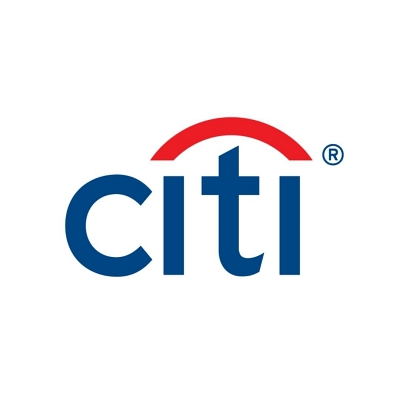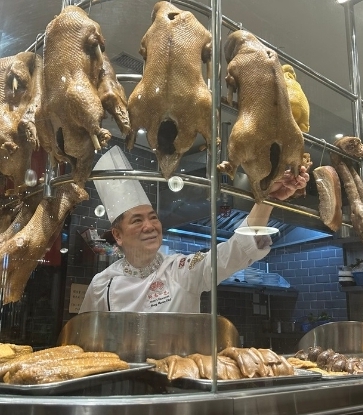Despite Roganic’s urban surroundings—amidst bustling Causeway Bay, no less—there’s little doubt that the restaurant is as close as it gets to owner Simon Rogan’s longstanding farm-to-fork ethos. Taking its cue from L’Enclume, its sister restaurant in Cartmel, England, where much of the exceptional produce—including fruits, vegetables, herbs and flowers—comes from Rogan’s 12-acre farm, Roganic takes a city-centric approach to local sourcing, swapping British-grown ingredients for local produce from organic farms in the New Territories as part of its commitment to reducing carbon footprint.
Since its opening in 2019, Roganic has forged strong relationships with local suppliers, working closely with the likes of New Age Organic Farm and Zen Organic Farm for gourmet vegetables, Wah Kee Farm for free-range pigs, Peter’s Seafood for fresh local seafood, Yi O Rice Farm for prized organic rice, and Common Farms for herbs and edible flowers grown indoors. Some dishes on the menu feature microgreens grown in-house using the latest Evogro technology, which allows the restaurant to grow a variety of microgreens including sunflower shoots, mustard cress, amaranth leaves, Mexican marigold and nasturtium.
RELATED: Living a more Sustainable Life: Michelin Star Chef, Simon Rogan

While on a mission to reduce food miles, there’s one thing that Roganic goes the extra mile for: a zero-waste menu. “Our team makes every endeavour to use the entirety of each ingredient, be it animal or mineral to avoid food waste,” says head chef Ash Salmon. “Each ingredient, as much as possible, is used to create components for dishes, whether as a sauce, oil, crumb or seasoning. Nothing is wasted when we design the menu.”
What about food scraps? In the creative hands of Roganic’s kitchen team, even waste products are repurposed and turned into hero ingredients of the restaurant’s dishes and cocktails. Leftover pineapple cores and lemon skins from staff breakfast, for example, become the restaurant’s hero ingredients for the restaurant’s tepache, a Mexican lemonade infused with pineapple.
Behind every plate of food served at Roganic is a meticulous operation that brings forth to an experience that feels seriously special. Read on to discover how Roganic puts sustainability on the menu, one dish at a time.

Wah Kee Farm Pork
To prepare this dish, Roganic sources a whole pig from Wah Kee Farm, a pioneer in breeding high quality, free-range pigs using traditional Chinese medicine since 1996. The pork is butchered into different parts, with the loin, belly and shoulder as the main elements of the dish. Staying true to the nose-to-tail philosophy, the pig head is also utilised to make a terrine served with crumpet and crispy pork skin as a side dish. The rest of the pork is used to make a pork sauce served with mustard seeds.

Three Yellow Chicken
As expected, not a single part of the two main ingredients in this dish, corn and chicken, goes to waste. A trio of chicken breast, chicken wing (stuffed with chicken leg meat) and chicken skin take centre stage, while the sauce is made with chicken bones and served with grilled corn pieces. The rest of the corn is turned into corn puree and corn tart. But it doesn't stop there—the dish is further elevated with a beautiful corn tea created by the bar team using corn husks as a soft drink pairing.

14 day aged duck glazed with HK honey, salt baked beetroot, red cabbage and preserved mulberry
Aged duck with beetroot and red cabbage is one of chef Ash’s favourite flavour combinations. “The main inspiration for this dish is the local produce and our commitment to supporting local farmers. Cabbage and beetroot are vegetables that are grown in abundance in Hong Kong and they are absolutely delicious,” he says. The vegetables are sourced either from Zero Foodprint Asia who works with Hong Kong Farmers Pride, or Farmhouse Productions. The cabbage served on the plate is braised with a stock made with cabbage and beetroot trimmings juiced with spices.
The duck from Hop Wo Ho poultry is aged in-house for 14 days before it’s glazed in a special local 100 flower honey. The duck breast is featured on the plate alongside a confit leg sausage, while all the wings, necks, carcass go into the duck sauce to add extra flavour.
From 1 March 2022 to 28 February 2023, Citi Prestige Cardholders can enjoy exclusive dining benefits including a complimentary welcome drink upon ordering Roganic’s tasting menu (Short Tasting Menu for lunch or Full Tasting Menu for dinner) or waiver of corkage upon patronage of one bottle of wine from wine list. Apply Citi Prestige Card now to enjoy exclusive benefits and exquisite MICHELIN restaurant dining, all year round. Please visit the Citi Prestige Card website for terms and conditions.






















